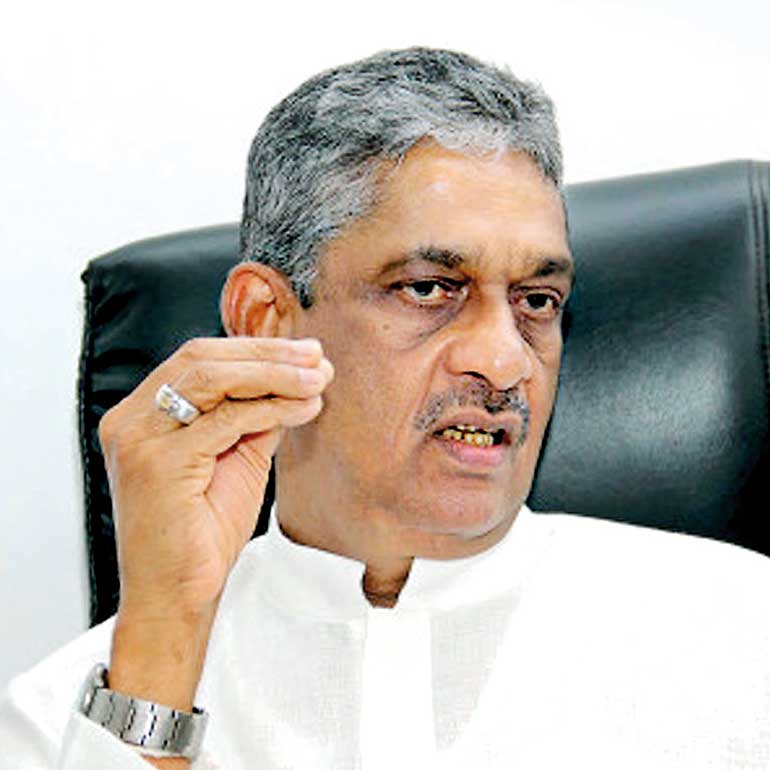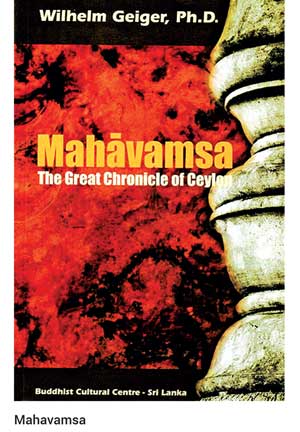Monday Dec 15, 2025
Monday Dec 15, 2025
Tuesday, 25 January 2022 01:08 - - {{hitsCtrl.values.hits}}

Field Marshal Sarath Fonseka
|
“History begins when men begin to think of the passage of time, in terms not of natural processes – the cycle of the seasons, the human life-span, but of a series of specific events in which men are consciously involved and which they can consciously influence” – E.H. Carr
 In the public mind, the image most representative of Sri Lanka’s victorious campaign against the LTTE is Sarath Fonseka, the then army commander and the country’s first Field Marshal. Strident, hard-driving, Fonseka is commonly credited with having motivated the army, which for three decades’ prior (prior to 2009) had struggled unsuccessfully to eradicate the threat of terrorism.
In the public mind, the image most representative of Sri Lanka’s victorious campaign against the LTTE is Sarath Fonseka, the then army commander and the country’s first Field Marshal. Strident, hard-driving, Fonseka is commonly credited with having motivated the army, which for three decades’ prior (prior to 2009) had struggled unsuccessfully to eradicate the threat of terrorism.
The LTTE fought the last “war” (2006-2009) more or less like a conventional army, organised into battalions and regiments, its commanders were Captains or Majors as in the terminology of European military hierarchy, the rank reference followed invariably by the man’s first name, a Captain Manoj or Major Vinod. Their cadre constituted mainly of youth from disadvantaged communities, rural, mono-lingual and inexperienced. They may not have fully understood the meaning, but the radio language of the LTTE was English radio jargon; words like, ‘alpha’, ‘charlie’,’roger’ to ‘mayday’; liberally used. The child soldiers looked malnourished, ragtag, almost cartoon-like, but in the business of death and destruction, the LTTE were remarkably effective.
For more than 30 years, the LTTE ran rings around the Sri Lankan governments; embarrassingly inept even in ordinary day to day affairs, they scampered in fear and agony like a headless chicken when challenged by the implacable terrorist group. Nothing in the mental make-up or character of our political establishment, suggest war-time leadership. Nature had designed them for other things. It was a great pity that war came to this island. Unlike the European countries (on whose institutional models all our institutions, including the army are based), we have been spared the horrors of real wars. 
Always, for the winner, war victory is a heady experience. Especially if the fighting was challenging, testing his available resources seriously; harder the fight, sweeter the final victory. The experience of winning the one war we had fought, especially one that had terrorised the country, left us in thrall. In those exhilarating days of victory celebrations, there was talk of even raising further divisions, a solution had been found!
What one nation struggles at, another overcomes; what one army finds hard going, another takes it in its stride. If you take countries like UK, Germany, Russia or France, in the recent centuries they have fought hundreds of wars against nations far and wide, winning many, losing some. Not only have they conquered lands far flung, they have also suffered huge defeats in the process, sometimes themselves being occupied by their enemies. Having repeatedly experienced every aspect of war, putting it in perspective comes easy.
War-like instincts of warrior races, when combined with strong economies, high productive capabilities and advance technology, leads to horrendous casualties in battle. In the 30 some years of our fighting with the LTTE, the country on the whole is said to have suffered something like 100,000 deaths, a casualty rate that points to a low intensity war. By comparison, Russia alone suffered 25 million or more deaths in the four years it fought the German invasion (1941-45). In the Battle of Stalingrad (July 1942-January 1943), in just seven months of fighting, Russia lost more than one million in dead. More recent wars, Vietnam, Iraq, Afghanistan, have resulted in millions of deaths in a relatively short period.
All the wars that our army has fought have been against our own citizens, who for various reasons had taken to arms against the State. The crudity, the incompetence or the short-sightedness of the country’s political establishment had set citizen against citizen, driving them to rebellion. By and large, the two combatants came from the same genetic pool, were of even physical prowess, had comparable economic strength (at soldier level) and share similar cultural/religious backgrounds.
Neither side had the capacity to make the weapons they used in battle; the tanks, guns to their boots, were all imported. Whoever triumphs in the field, none of these aspects: the economy, the culture, the general capabilities, change drastically. On the other hand, when irreconcilable ideologies meet head-on, unlike civilisations clash or different racial types go to war on a continental size battlefield, history holds its breath, who will prevail, which idea will dominate?
After 9/11, world opinion turned against organisations using terrorism as a weapon. Yet, trapped in its own insularity, the LTTE remained intransigent, determined not only to settle the issue militarily, but also to defend territory under its control like a conventional army. We do not have the exact causality figures of the two forces in the various battles, the smaller force would be at a disadvantage in a war of attrition.
While it lasted, the LTTE posed a deadly threat not only in the battlefield but also in civilian areas, Sarath Fonseka himself was seriously injured in a bomb attack in Colombo. Finally, when the LTTE was pushed into a corner and eventually destroyed, the nation rejoiced, our war had ended victoriously, the dark cloud of terrorism was no more. The Field Marshal baton however did not land in Fonseka’s hand immediately. There was a lot of history between the ending of the war and his appointment as Field Marshal, including a failed presidential bid, a controversial trial and a period of incarceration for him, in the interim.
It is with this background that we need to look at the Field Marshall’s complaint about inadequacies of the Mahavamsa, in their recording of the “history” of the war of which he was a pivotal figure.
History in a general sense, is the past examined by different eyes, for instance, the Roman era looked at through a modern consciousness. The historian has a vastly different awareness to that of a Roman. He examines an aspect of Rome, in reference to a given set of historical records, attempting to decipher the Roman mind and deeds. The ‘historical records’ he examines in the process will carry all the infirmities of human observation; hearsay, bias, distortions, half-truths, inconsistencies and contradictions. Impartiality or objective scholarship is easily declared, but rarely witnessed, and when it comes to historical records, impartiality is all the rarer.
With time, with changing perceptions, the interpretation of past events also changes.
When present day authors of the Mahavamsa, attempt to put on record events which are contemporary, controversy is inevitable. Other observers of the unfolding events, could very well interpret them differently. Why this fact, and not the other fact? Is history to be written only by and only for the victor? Several histories have been written in this manner, an approach that will not satisfy modern scholarship.
Lord Acton (1834-1902), considered by many to be the most distinguished occupant of the Regius Chair of Modern History at the University of Cambridge, instructed the contributors to the first “Cambridge Modern History” by letter thus, “Our Waterloo must be one that satisfies French and English, German and Dutch alike; that nobody can tell, without examining the list of authors, where the Bishop of Oxford laid down the pen, and whether Fairbairn or Gasquet, Liebermann or Harrison took it up.”
Later historians have questioned the possibility of such aseptic neutrality, contending that the historian is a man of learning, not a mere recorder of events; there is a philosophy, a theme, in his work. Herodotus, the father of history defined the purpose of his writing thus- “to preserve a memory of the deeds of the Greeks and the barbarians, and in particular, beyond everything else, to give the cause of their fighting one another.”
History is written based on historical “facts”. No historical fact stands alone; it is connected to an ocean of other facts. The historian cannot examine all facts, same as he cannot explore the entire ocean. He picks his theme, as well as his facts; emphasising some, discounting others, adhering to his own philosophy of history.
As has been famously said, “accuracy is a duty, not a virtue”, for a historian, like an architect using properly mixed concrete in his building, historical accuracy is a necessary condition of his work, his essential function.
If a thousand years hence, in the 30th Century, an eager young student in Dambulla came across a stone carving announcing that in 1975 Sri Lanka carried the Chair of an organisation called the non-aligned movement which counted more than one hundred nations as members, including giants like China and India, he will be most impressed, perhaps concluding that his country was much more powerful in the distant 20th Century than in the 30th century he is living in. The carver of the stone, being a talented propagandist, may also carve the information that in this particular period of time the ruler of Sri Lanka was a wise and just person, who having ensured the nation’s prosperity, devoted time to international matters.
Inspired by that vision of atavistic glory, our 30th Century student from Dambulla may dig deeper, discovering other 20th Century stone carvings and parchments, giving him a very different view of those times. He will learn that the non-aligned movement of the 20th century, was a short-lived assortment of disparate countries, reacting to what was perceived as a bi-polar global arrangement then gathered around the US and the USSR. Most of the countries in the non-aligned movement were desperately poor, very few were genuine democracies, very many of their leaders were later found to be corrupt. Even among them, Sri Lanka, in size, population and economy, was but a minnow. The chairmanship of the movement was purely ceremonial; among such dissimilar nations, going to the least objectionable.
|
The postscript to his history lesson will be provided by the final stone carving the 30th Century student discovers; the Sri Lankan leader of the non-aligned movement (described in another stone carving as the leader of two thirds of all people on earth!) suffering a humiliating defeat at a general elections held in 1977, voted out lock, stock and barrel by the Sri Lankan voter!
Just like his real time 30th Century Sri Lanka, the 20th century country too was mediocre in every way, a land of big talk and fancy dreams; led by big talkers, poseurs, tricksters and crooks! Our 30th century student from Dambulla will say with a sigh “the times may change, but a people don’t; our leaders are not up to the task now, nor were they then!”
It is a truism that historical facts so said, tend to be imperfect, by themselves making little sense. For the historian to do his work, many facts must reveal themselves.
Lord Acton wrote of his own teacher Dollinger, the much-regarded German historian/theologian at the university of Munich, “He would not write with imperfect materials, and to him, the materials were always imperfect!”